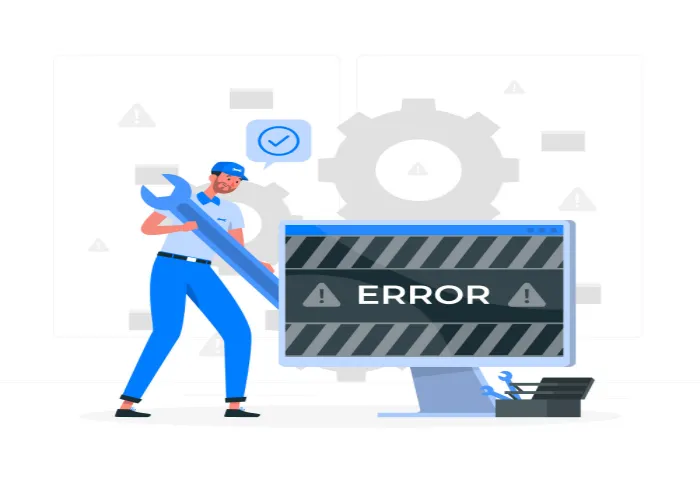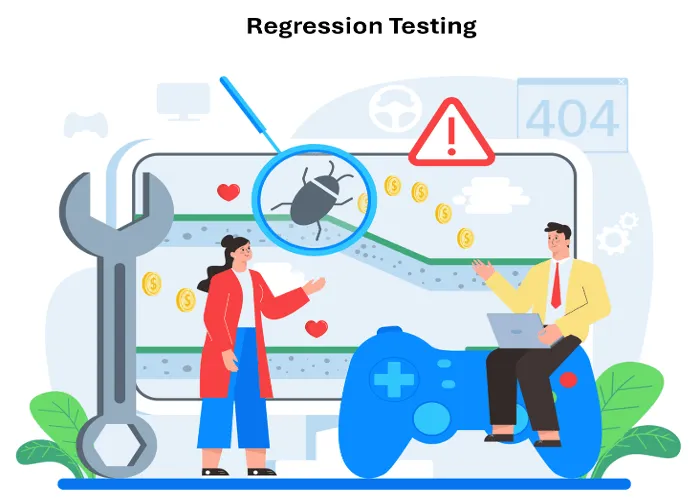Negative Testing How To Strategies

Introduction
In software quality assurance (QA) and quality control (QC), testing is the backbone of ensuring a stable and reliable application. While positive testing is often the primary focus—verifying that a system works as expected with valid inputs—negative testing is just as critical. Negative testing examines how a system responds to invalid, unexpected, or incorrect inputs, exposing weaknesses that could lead to application failures, security vulnerabilities, or poor user experience.
Understanding and mastering negative testing goes beyond just finding bugs—it helps build resilient applications that handle errors gracefully. By incorporating negative testing into the overall testing process, testers can create more reliable, secure, and user-friendly software under any circumstance.
This guide explores negative testing strategies, best practices, and actionable techniques to help beginner testers strengthen applications against unforeseen errors.
Positive vs. Negative Testing: The Key Differences
A system should not only function correctly when things go right but also handle failures when things go wrong without crashing or exposing vulnerabilities.
Positive testing checks whether the system behaves correctly with expected and valid inputs. For example:
Entering a correct username and password to verify authentication works properly. Submitting valid form details to ensure data is stored as expected. Negative testing pushes the system beyond standard conditions, introducing invalid inputs and unpredictable user behaviors to assess how it responds. For example:
Entering letters in a numeric field to see if an appropriate error message appears. Leaving mandatory fields empty during form submission and testing how the application handles this mistake. Both types of testing work together seamlessly, ensuring a well-rounded and thorough assessment of the system’s functionality.
Why Negative Testing Matters?
Negative testing is not just about finding bugs—it is a proactive approach to improving system reliability. Here’s why negative testing is essential:
Reveals Hidden Bugs:
Some defects only appear when users input unexpected data. Negative testing exposes hidden defects that standard positive tests often overlook.
Prevents Crashes:
Applications should fail safely rather than freeze or crash due to bad inputs.
Boosts Security:
Hackers often exploit weak error handling. Negative testing helps identify security vulnerabilities before malicious actors do.
Enhances User Experience (UX):
Clear error messages and recovery options ensure users don’t get frustrated.
Builds Confidence:
A thoroughly tested system can handle real-world mistakes, ensuring smooth operation.
For example, if a user enters “abc” in a numeric-only age field, the system should trigger an error message instead of breaking the application.
How An Application Should Respond To Negative Testing
An application should respond to negative testing by gracefully handling invalid or unexpected inputs or actions without crashing or producing incorrect behavior. Here’s how it should respond:
1. Validate Inputs
Reject invalid inputs with clear, user-friendly error messages.
For example, if a form field expects a number and receives text, it should display: “Please enter a valid number.”
2. Handle Errors Gracefully
Catch exceptions or errors and prevent application crashes. Log errors internally for debugging while showing safe messages to users like “Something went wrong. Please try again later.”
3. Maintain Data Integrity
Ensure that invalid actions do not corrupt the database or cause inconsistent states.
4. Security Compliance
Avoid exposing internal application details in error messages (e.g., stack traces, file paths). Ensure input validation protects against attacks like SQL injection, XSS, etc.
5. Consistent Behavior
Provide predictable and consistent responses for all invalid scenarios to maintain trust in the system.
6. Automated Error Logging
Log failures with enough detail (user action, time, input values) to help developers trace and fix issues efficiently.
In short, a well-designed application under negative testing conditions should be robust, secure, user-friendly, and stable.
Negative Testing Techniques
These testing techniques play a crucial role in negative testing, helping identify vulnerabilities and ensure a system reacts properly to unexpected conditions. Here’s how each one relates to negative testing:
1. Boundary Value Analysis (BVA)
Definition: Boundary Value Analysis is a black-box testing technique that focuses on testing the extreme ends or boundaries of input values. Since defects often occur at the edges of valid ranges, BVA helps identify issues by testing values just inside, at, and just outside the boundaries.
Example:
Age Input Field (Valid Range: 18-60)
Test values: 17 (just below), 18 (minimum), 60 (maximum), 61 (just above) Expected behavior: The system should accept values within the range and reject those outside it.
2. Equivalence Partitioning (EP)
Definition: Equivalence Partitioning is a black-box testing technique that divides input data into logical groups (partitions) where values within each group are expected to behave similarly. Instead of testing every possible input, testers select one representative value from each partition to reduce test cases while maintaining coverage.
Example:
Age Input Field (Valid Range: 18-60)
Partitions: Invalid: Below 18 (e.g., 10), Valid: Between 18-60 (e.g., 35), Invalid: Above 60 (e.g., 70)
Expected behavior: The system should accept values within the valid partition and reject those outside it.
3. Error Guessing
Error Guessing relies on intuition and past experience to anticipate potential flaws in an application. Testers deliberately introduce flawed data or execute unexpected actions to evaluate how the system handles potential failures..
Examples include:
Entering too many characters in a text field. Using invalid date formats (e.g., 32/13/2025). Triggering unusual navigation sequences (e.g., clicking “Back” during payment processing). This technique is especially valuable for uncovering errors not covered by structured test cases.
4. Checklists
Checklists serve as a systematic approach to negative testing by ensuring that common failure scenarios are covered. Examples include:
Testing empty mandatory fields to confirm proper error messages. Attempting invalid login credentials multiple times. Submitting forms without selecting a required option. A structured checklist reduces oversight and ensures comprehensive negative test coverage.
5. Anti-patterns
Anti-patterns refer to common design flaws or bad practices that lead to errors, poor performance, or security vulnerabilities. Negative testing identifies whether these pitfalls exist in an application. Examples of anti-patterns include:
Hardcoded credentials: Testing whether a system accepts login credentials embedded in the code. Poor error handling: Checking if the application crashes instead of providing meaningful messages. Unrestricted access: Attempting unauthorized actions to validate role-based permissions. By testing anti-patterns, QA testers help eliminate common design mistakes before they impact users.
6. Fuzz Testing
Fuzz Testing, also known as Fuzzing, involves feeding a system with random, malformed, or unpredictable data to assess its resilience and response to unexpected inputs. This technique is valuable for stress-testing security and stability. Examples include:
Inputting nonsensical characters into a form (e.g., “@!#&%” in a phone number field). Overloading input fields with massive amounts of data. Sending corrupt files to test how a system processes uploads. Fuzz testing helps uncover vulnerabilities, especially in security-critical applications.
7. Exploratory Testing
Unlike scripted test cases, exploratory testing is a dynamic approach where testers intuitively interact with the software, uncovering errors through unexpected user behaviors. Negative testing through exploratory methods can include:
Exploring a system in an unpredictable manner to uncover inconsistencies and unexpected behavior. Using unexpected input formats (e.g., emojis in an address field). Trying to access restricted content without proper permissions. Exploratory negative testing simulates real-world user behavior, revealing flaws traditional tests might miss.
8. State Transition Testing
State Transition Testing evaluates how an application moves between different states, particularly when dealing with invalid inputs or unexpected conditions. Negative testing applies this method by:
Testing invalid state transitions (e.g., attempting payment before selecting a product). Interrupting processes midway to check system recovery (e.g., closing a browser during file uploads). Trying invalid sequences of actions, such as canceling an order after delivery confirmation. Negative testing through state transition analysis ensures the application maintains stability across different user interactions.
Common Negative Testing Scenarios
Negative testing encompasses various invalid inputs and situations. Here are some of the most important ones:
Invalid Data Inputs
- Typing letters in numeric fields (e.g., entering “hello” in an age input field).
- Submitting special characters where only plain text is allowed (e.g., passwords containing spaces).
Empty Fields
- Trying to submit a form without entering required fields.
- Testing what happens when optional fields are left blank.
Boundary Value Violations
- Entering values just above or below allowed limits (e.g., inputting “101” when the valid range is 1-100).
- Incorrect File Uploads
- Uploading an .exe file when only .jpg images are allowed.
- Attempting to upload excessively large files beyond the size limit.
- Unauthorized Access Attempts
- Try to access restricted pages. Example: trying to perform admin actions with a basic user account.
- Entering incorrect login details multiple times to observe system behavior.
- Test URL routes that should be invalid
Unexpected User Actions
- Double-clicking buttons rapidly to test responsiveness.
- Refreshing pages during operations to check stability.
- Click on buttons that shouldn’t be clickable.
- Navigation and Network Failures
- Entering invalid URLs to test redirection logic.
- Disconnecting the internet mid-process to see how the app handles network failures.
Effective Negative Testing Strategies
1. Understand the System’s Expected Behavior
Before diving into negative testing, testers must analyze requirements to understand valid inputs and expected system responses. This helps them devise realistic negative test cases.
2. Think Like a User (or Hacker!)
Consider real-world misuse or mistakes—users often input incorrect data accidentally. Additionally, think from a security perspective: how might hackers try to break the system?
3. Use Advanced Testing Techniques
Boundary Value Analysis: Test just beyond valid ranges (e.g., entering 0 or 101 for a 1-100 range). Equivalence Partitioning: Group inputs into valid/invalid categories for structured testing.
4. Prepare Comprehensive Test Data
Lists of invalid values (e.g., long strings, special characters). Mismatched data types (e.g., numbers instead of dates).
5. Prioritize High-Risk Features
Focus on testing critical functionalities, such as login systems, payments, and data input fields.
6. Document Everything
Record test cases, expected results, and actual behavior to refine testing processes.
7. Continuously Review & Update Tests
Software evolves—negative tests should adapt to new features and security requirements.
Manual vs. Automated Negative Testing
Manual Testing Tips
- Use checklists to track invalid inputs.
- Observe carefully for subtle bugs, like improper error messages.
- Be exploratory—go beyond predefined scripts and test unexpected workflows.
Automated Testing Tips
- Data-driven testing: Use CSV or JSON files with invalid inputs.
- Parameterized tests: Run test logic with multiple variations.
- Integrating negative tests into the CI/CD pipeline ensures automated execution with each build, helping to detect regressions early.
- Manual testing is great for simulating human interactions, while automation enhances efficiency and scalability.
Best Practices for Negative Testing
- Start negative testing early in the development cycle.
- Prioritize core workflows and high-risk areas.
- Integrating both positive and negative test cases ensures a more thorough and well-rounded testing approach. Continuously expand invalid input libraries.
- Validate user-facing error messages to ensure clarity.
- Learn from past defects to improve future test cases.
Conclusion
Negative testing is an essential part of software quality assurance (QA) and quality control (QC), ensuring applications don’t just work in perfect conditions, but also handle failures gracefully. Mastering negative testing strengthens security, reliability, and user experience.
By implementing thoughtful negative test cases, testers contribute to building software that users can trust—a skill that will serve them well in any QA/QC role.





🗨️ Reader Comments